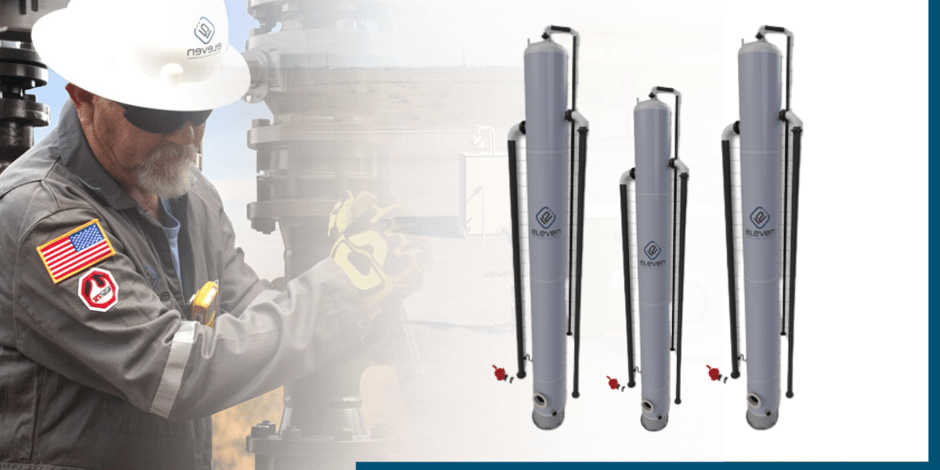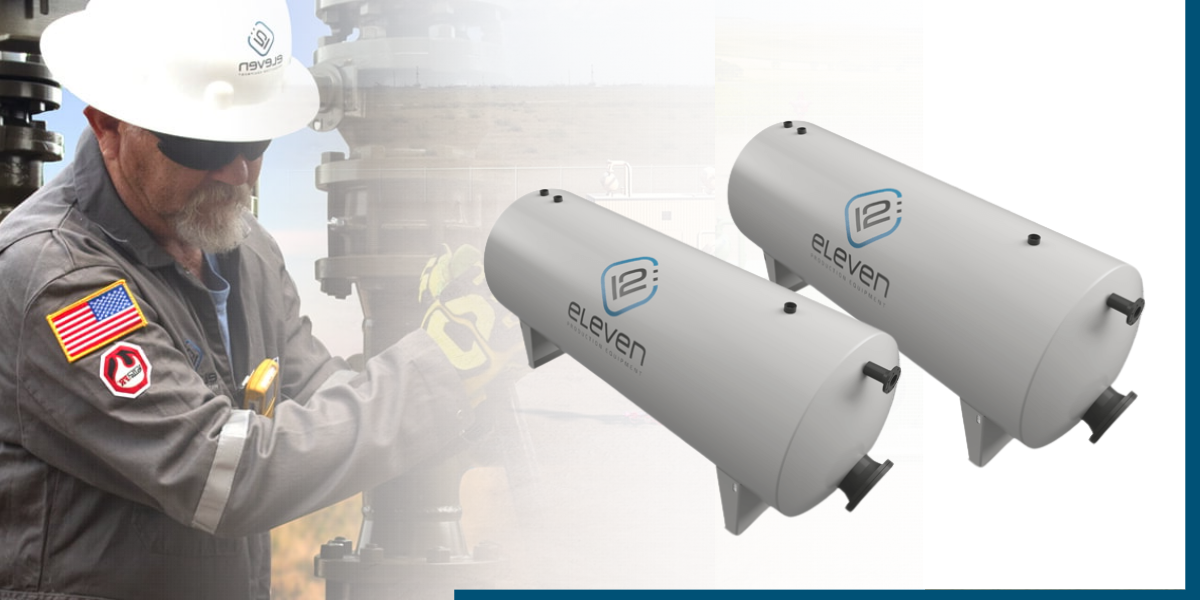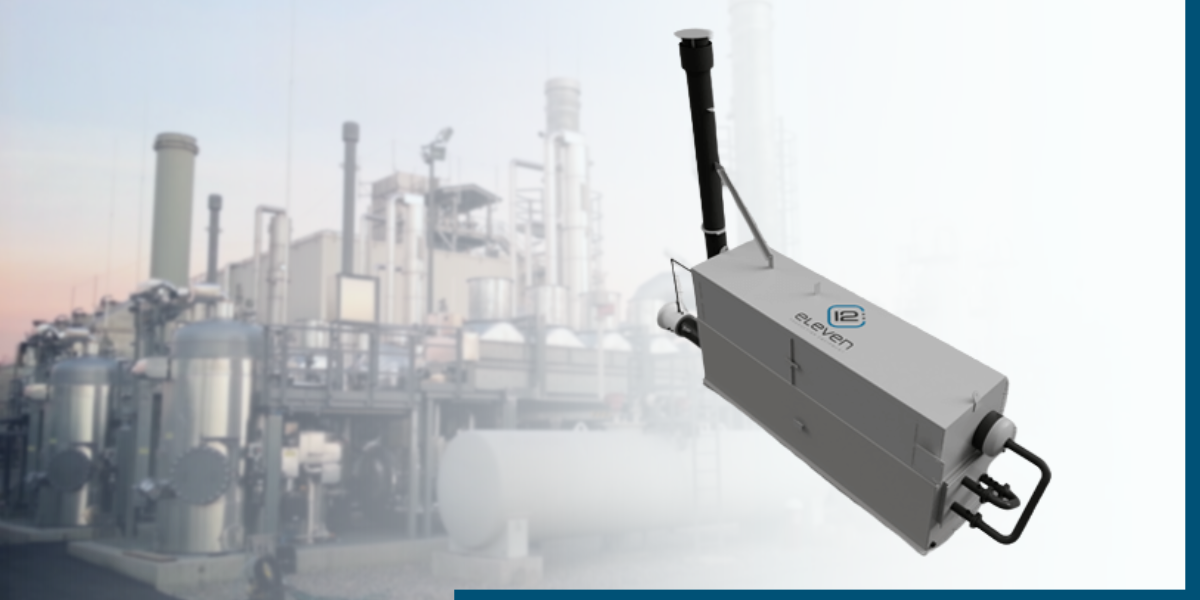Free Water Knockout (FWKO): What You Need To Know
Free water knockouts (FWKO) are an essential component in the oil and gas industry, designed to remove any free water present in the production...

Looking to install a vapor recovery tower in your plant or on your location?
In this blog post, we'll be discussing the fundamentals of vapor recovery towers: what they are and how they function along with their many advantages for businesses in various industries. Read on to find out more about these valuable tools for safe, efficient operations!
Vapor recovery is perhaps the final stage in separation and the last attempt to capture any high-end hydrocarbon flashing in the process train. Vapor Recovery Towers are equipment most commonly placed after Crude Treating and before Tank storage.
In addition to preventing vapor release from tank thief-hatches, proper vapor recovery helps users company with Environmental Regulatory Agencies such as the EPA or Railroad Commission and reduces the amount of hydrocarbon burn at the vapor flare converting a typical waste gas into a sellable gas.
A Vapor Recovery Tower (also known as (VRT, Lo-Pressure Towers, Flash Towers) are tall pressure vessels installed between production separators and liquid storage tanks. The best VRTs are engineered for proper retention time to allow gas to separate from the liquid, without potential for trapping liquids in gas piping leading to a VRU (Vapor Recovery Unit).
Most VRTs are designed to work with pressures between 50 and 175 psig, but they usually only have to gravity-feed the liquid storage tanks at a very low pressure (about 1 psig). In most cases, the flash gas that comes from the liquids in the VRT goes to a vapor recovery unit so it can be compressed.
Vapor recovery towers are used to collect and recover volatile organic compounds (VOCs) from gases produced in many industrial processes. These towers help reduce air pollution by recovering harmful VOCs before they can be released into the atmosphere. They do this by trapping the volatile components of a gas mixture and converting them into liquid form, which can then be collected and stored.
VRTs are usually made of stainless steel or glass-lined steel and utilize a series of plates or trays, each with a different pressure rating to provide the right amount of separation between gas and liquid. As the gas and liquid pass through the tower’s plates, gravity helps them to separate. The vaporized VOCs are then collected in the top of the tower and routed to a storage or collection system, while the liquid is collected at the bottom of the tower and sent to a tank for further processing.
VRTs are highly efficient and can recover up to 99% of VOCs from a gas stream, resulting in significantly reduced air pollution. In addition, they require minimal maintenance and have relatively low operating costs. For these reasons, VRTs are becoming increasingly popular among industries that need to reduce their emissions of VOCs into the atmosphere.
Vapor Recovery, an essential process in many industries, particularly in the oil and gas sector, plays a significant role in maintaining environmental, operational, and economic balance. Here's why it is of paramount importance:
At the forefront of the importance of vapor recovery is environmental conservation. Volatile Organic Compounds (VOCs), if released into the atmosphere, contribute to the formation of ground-level ozone, a primary component in smog. This not only affects air quality but can also harm the environment and human health, causing or exacerbating respiratory conditions like asthma.
To combat the environmental challenges presented by VOCs, various regulatory bodies, including the Environmental Protection Agency (EPA), have set stringent emission standards. Adhering to these standards is not just a matter of environmental stewardship but also a legal requirement. Companies that fail to comply face the risk of hefty fines and penalties.
Rather than letting valuable hydrocarbons escape as emissions, vapor recovery captures and converts them into a sellable product. This means businesses can tap into an additional revenue stream, turning what was once waste into profit.
Releasing large amounts of hydrocarbon vapors can be a significant safety risk. These vapors are flammable and, if not properly managed, can lead to fires or explosions, jeopardizing the safety of the facility and its workers.
Vapor recovery systems ensure that equipment operates efficiently. For instance, by reducing the back pressure on storage tanks, these systems ensure that the tanks and other associated infrastructure last longer and function optimally.
By capturing and reusing hydrocarbons, vapor recovery contributes to the conservation of these finite resources, ensuring they are used efficiently and responsibly.
In an age where consumers are becoming increasingly conscious of environmental responsibility, businesses that take steps to reduce their emissions are viewed more favorably. Adopting effective vapor recovery measures can thus contribute to a positive public image and brand reputation.
Some benefits of using VRTs include:
Overall, Vapor Recovery Towers are a valuable piece of equipment that help to reduce air pollution and capture more product for sale. By utilizing VRTs, industries can take advantage of their efficiency and low operating costs while simultaneously reducing their environmental impact.
This is essential technology in the oil and gas industry, as it helps companies meet environmental regulations, increase their revenue, and reduce back pressure on storage tanks. Furthermore, VRTs can protect VRUs from vapor pressure surges, capture more product for sale, and manage the heavy and lighter grade crudes making them essential in any hydrocarbon process train.
Discover the strengths that the 12:eleven specialists in innovation and customization bring to production and process equipment. Contact 12:eleven and experience quality that is reliable, efficiency that is proven and service that is unsurpassed.
We invite you to request a quote for our products or services.
Oil and Gas Production and Process Equipment - In this blog post we will dive into the most important pieces of oil and gas production equipment. We will also talk about how to maintain them properly.
Oil Stabilizing Towers: What You Need to Know - In this article, we'll discuss the basics of oil stabilization towers and provide information on how they work, and the benefits they offer.
What You Need to Know About Gas Dehydration Units - Here's everything you need to know about gas dehydration units and how they can be used to eliminate unwanted moisture from recovered natural gas.
Everything you need to know about Glycol Contact Towers - In this post, we'll provide an overview of what a glycol contact tower is, explain the benefits of using one, and the types available.
As a specialty company providing custom design, engineering and fabrication of production and process equipment, we are dedicated to doing what’s right for our customers and passionate about creating value on every project.
We leverage the field expertise of our design and engineering group together with our diversified manufacturing capabilities to deliver a broad range of innovative surface production equipment - including Separators, Treaters, Free Water Knock Outs, Bulk and Test Packages, Indirect Line Heaters, Gas Production Units, Gas Dehydration Units, Glycol Contact Towers, Vapor Recovery Towers, Oil Stabilizing Towers.

Free water knockouts (FWKO) are an essential component in the oil and gas industry, designed to remove any free water present in the production...

Gas Production Units (GPUs) are a crucial component of the oil and gas industry. They play a significant role in the extraction, processing, and...

Piping modules and spools are an important part of any piping system. They help to keep the fluid in the system moving by providing a path for it to...